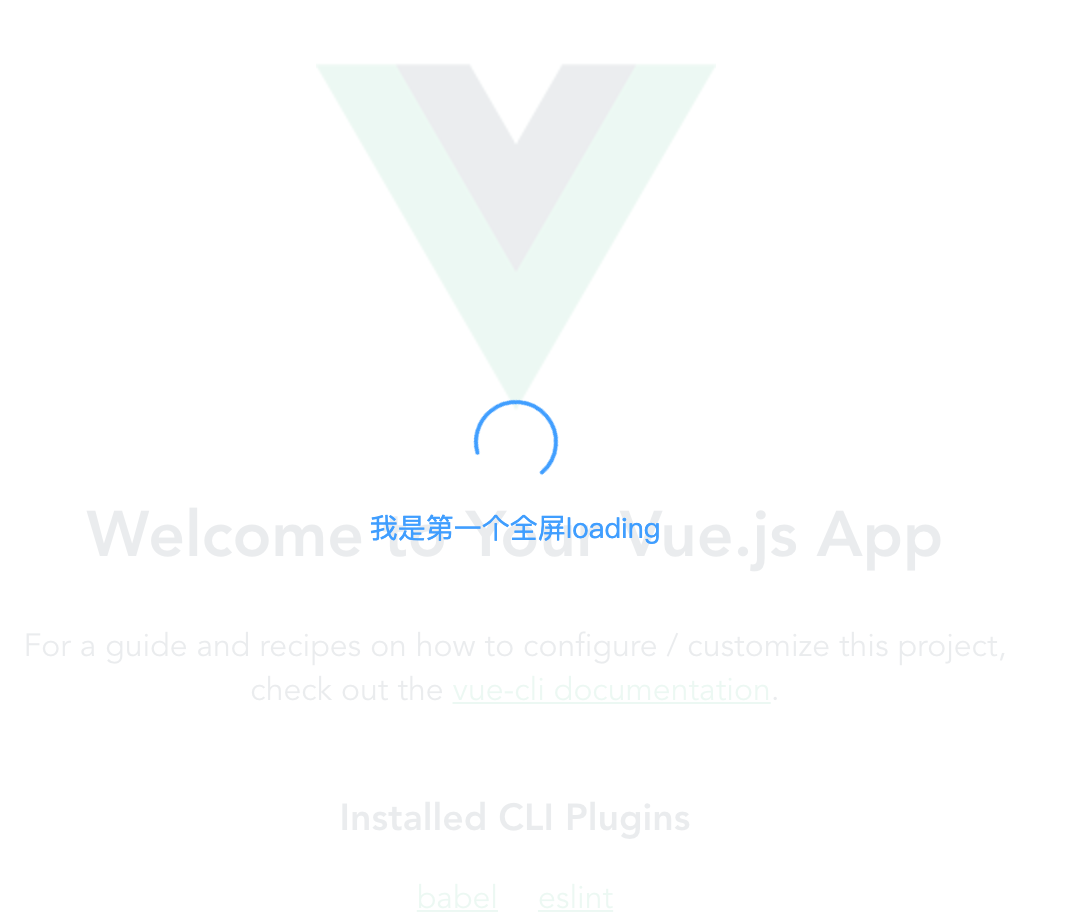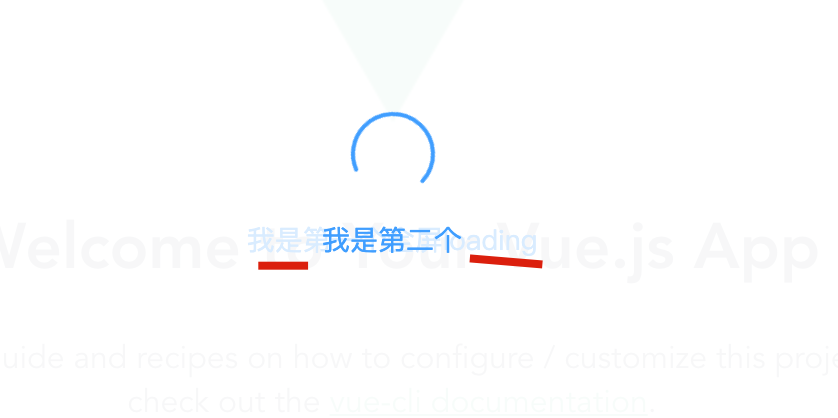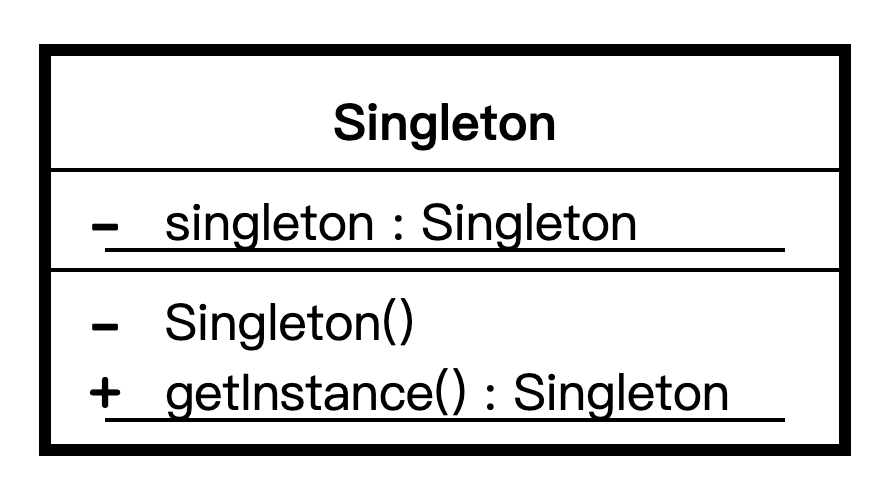代码也写了几年了,设计模式处于看了忘,忘了看的状态,最近对设计模式有了点感觉,索性就再学习总结下吧。
大部分讲设计模式的文章都是使用的 Java、C++ 这样的以类为基础的静态类型语言,作为前端开发者,js 这门基于原型的动态语言,函数成为了一等公民,在实现一些设计模式上稍显不同,甚至简单到不像使用了设计模式,有时候也会产生些困惑。
下面按照「场景」-「设计模式定义」- 「代码实现」- 「更多场景」-「总」的顺序来总结一下,如有不当之处,欢迎交流讨论。
# 场景
如果需要实现一个全局的 loading 遮罩层,正常展示是这样的:

但如果用户连续调用 loaing 两次,第二个遮罩层就会覆盖掉第一个:

看起来就像出了 bug 一样,因此我们需要采用单例模式,限制用户同一时刻只能调用一个全局 loading 。
# 单例模式
看下 维基百科 (opens new window) 给的定义:
In software engineering (opens new window), the singleton pattern is a software design pattern (opens new window) that restricts the instantiation (opens new window) of a class (opens new window) to one "single" instance. This is useful when exactly one object is needed to coordinate actions across the system.
可以说是最简单的设计模式了,就是保证类的实例只有一个即可。

看一下 java 的示例:
public class Singleton {
private static final Singleton INSTANCE = new Singleton();
private Singleton() {}
public static Singleton getInstance() {
return INSTANCE;
}
}
上边在初始化类的时候就进行了创建对象,并且将构造函数设置为 private 不允许外界调用,提供 getInstance 方法获取对象。
还有一种 Lazy initialization 的模式,也就是延迟到调用 getInstance 的时候才去创建对象。但如果多个线程中同时调用 getInstance 可能会导致创建多个对象,所以还需要进行加锁。
public class Singleton {
private static volatile Singleton instance = null;
private Singleton() {}
public static Singleton getInstance() {
if (instance == null) {
synchronized(Singleton.class) {
if (instance == null) {
instance = new Singleton();
}
}
}
return instance;
}
}
但单例模式存在很多争议,比如可测试性不强、对抽象、继承、多态都支持得不友好等等,但我感觉主要是基于 class 这类语言引起的问题,这里就不讨论了。
回到 js ,模拟上边实现一下:
const Singleton = function () {
this.instance = null;
};
Singleton.getInstance = function (name) {
if (!this.instance) {
this.instance = new Singleton();
}
return this.instance;
};
const a = Singleton.getInstance();
const b = Singleton.getInstance();
console.log(a === b); // true
但上边就真的是邯郸学步一样的模仿了 java 的实现,事实上,js 创建对象并不一定需要通过 new 的方式,下边我们详细讨论下。
# js 的单例模式
首先单例模式产生的对象一般都是工具对象等,比如 jQuery 。它不需要我们通过构造函数去传参数,所以就不需要去 new 一个构造函数去生成对象。
我们只需要通过字面量对象, var a = {} ,a 就可以看成一个单例对象了。
通常的单例对象可能会是下边的样子,暴露几个方法供外界使用。
var Singleton = {
method1: function () {
// ...
},
method2: function () {
// ...
}
};
但如果Singleton 有私有属性,可以写成下边的样子:
var Singleton = {
privateVar: '我是私有属性',
method1: function () {
// ...
},
method2: function () {
// ...
}
};
但此时外界就可以通过 Singleton 随意修改 privateVar 的值。
为了解决这个问题,我们可以借助闭包,通过 IIFE (Immediately Invoked Function Expression) 将一些属性和方法私有化。
var myInstance = (function() {
var privateVar = '';
function privateMethod () {
// ...
}
return {
method1: function () {
},
method2: function () {
}
};
})();
但随着 ES6 、Webpack 的出现,我们很少像上边那样去定义一个模块了,而是通过单文件,一个文件就是一个模块,同时也可以看成一个单例对象。
// singleton.js
const somePrivateState = []
function privateMethod () {
// ...
}
export default {
method1() {
// ...
},
method2() {
// ...
}
}
然后使用的时候 import 即可。
// main.js
import Singleton from './singleton.js'
// ...
即使有另一个文件也 import 了同一个文件。
// main2.js
import Singleton from './singleton.js'
但这两个不同文件的 Singleton 仍旧是同一个对象,这是 ES Moudule 的特性。
那如果通过 Webpack 将 ES6 转成 ES5 以后呢,这种方式还会是单例对象吗?
答案当然是肯定的,可以看一下 Webpack 打包的产物,其实就是使用了 IIFE ,同时将第一次 import 的模块进行了缓存,第二次 import 的时候会使用之前的缓存。可以看下 __webpack_require__ 的实现,和单例模式的逻辑是一样的。
function __webpack_require__(moduleId) {
var cachedModule = __webpack_module_cache__[moduleId];
// 单例模式的应用
if (cachedModule !== undefined) {
return cachedModule.exports;
}
var module = (__webpack_module_cache__[moduleId] = {
exports: {},
});
__webpack_modules__[moduleId](
module,
module.exports,
__webpack_require__
);
return module.exports;
}
# 代码实现
回头开头我们说的全局 loading 的问题,解决起来也很简单,同样的,如果已经有了 loading 的实例,我们只需要直接返回即可。
这里直接看一下 ElementUI 对于全局 loading 的处理。
// ~/packages/loading/src/index.js
let fullscreenLoading;
const Loading = (options = {}) => {
...
// options 不传的话默认是 fullscreen
options = merge({}, defaults, options);
if (options.fullscreen && fullscreenLoading) {
return fullscreenLoading; // 存在直接 return
}
let parent = options.body ? document.body : options.target;
let instance = new LoadingConstructor({
el: document.createElement('div'),
data: options
});
...
if (options.fullscreen) {
fullscreenLoading = instance;
}
return instance;
};
这样在使用 Element 的 loading 的时候,如果同时调用两次,其实只会有一个 loading 的遮罩层,第二个并不会显示。
mounted() {
const first = this.$loading({
text: '我是第一个全屏loading',
})
const second = this.$loading({
text: '我是第二个'
})
console.log(first === second); // true
}
# 更多场景
如果使用了 ES6 的模块,其实就不用考虑单不单例的问题了,但如果我们使用的第三方库,它没有 export 一个实例对象,而是 export 一个 function/class 呢?
比如之前介绍的 发布-订阅模式 (opens new window) 的 Event 对象,这个肯定需要是全局单例的,如果我们使用 eventemitter3 这个 node 包,看一下它的导出:
'use strict';
var has = Object.prototype.hasOwnProperty
, prefix = '~';
/**
* Constructor to create a storage for our `EE` objects.
* An `Events` instance is a plain object whose properties are event names.
*
* @constructor
* @private
*/
function Events() {}
//
// We try to not inherit from `Object.prototype`. In some engines creating an
// instance in this way is faster than calling `Object.create(null)` directly.
// If `Object.create(null)` is not supported we prefix the event names with a
// character to make sure that the built-in object properties are not
// overridden or used as an attack vector.
//
if (Object.create) {
Events.prototype = Object.create(null);
//
// This hack is needed because the `__proto__` property is still inherited in
// some old browsers like Android 4, iPhone 5.1, Opera 11 and Safari 5.
//
if (!new Events().__proto__) prefix = false;
}
/**
* Representation of a single event listener.
*
* @param {Function} fn The listener function.
* @param {*} context The context to invoke the listener with.
* @param {Boolean} [once=false] Specify if the listener is a one-time listener.
* @constructor
* @private
*/
function EE(fn, context, once) {
this.fn = fn;
this.context = context;
this.once = once || false;
}
/**
* Add a listener for a given event.
*
* @param {EventEmitter} emitter Reference to the `EventEmitter` instance.
* @param {(String|Symbol)} event The event name.
* @param {Function} fn The listener function.
* @param {*} context The context to invoke the listener with.
* @param {Boolean} once Specify if the listener is a one-time listener.
* @returns {EventEmitter}
* @private
*/
function addListener(emitter, event, fn, context, once) {
if (typeof fn !== 'function') {
throw new TypeError('The listener must be a function');
}
var listener = new EE(fn, context || emitter, once)
, evt = prefix ? prefix + event : event;
if (!emitter._events[evt]) emitter._events[evt] = listener, emitter._eventsCount++;
else if (!emitter._events[evt].fn) emitter._events[evt].push(listener);
else emitter._events[evt] = [emitter._events[evt], listener];
return emitter;
}
/**
* Clear event by name.
*
* @param {EventEmitter} emitter Reference to the `EventEmitter` instance.
* @param {(String|Symbol)} evt The Event name.
* @private
*/
function clearEvent(emitter, evt) {
if (--emitter._eventsCount === 0) emitter._events = new Events();
else delete emitter._events[evt];
}
/**
* Minimal `EventEmitter` interface that is molded against the Node.js
* `EventEmitter` interface.
*
* @constructor
* @public
*/
function EventEmitter() {
this._events = new Events();
this._eventsCount = 0;
}
...
/**
* Add a listener for a given event.
*
* @param {(String|Symbol)} event The event name.
* @param {Function} fn The listener function.
* @param {*} [context=this] The context to invoke the listener with.
* @returns {EventEmitter} `this`.
* @public
*/
EventEmitter.prototype.on = function on(event, fn, context) {
return addListener(this, event, fn, context, false);
};
...
...
// Alias methods names because people roll like that.
//
EventEmitter.prototype.off = EventEmitter.prototype.removeListener;
EventEmitter.prototype.addListener = EventEmitter.prototype.on;
//
// Expose the prefix.
//
EventEmitter.prefixed = prefix;
//
// Allow `EventEmitter` to be imported as module namespace.
//
EventEmitter.EventEmitter = EventEmitter;
//
// Expose the module.
//
if ('undefined' !== typeof module) {
module.exports = EventEmitter;
}
可以看到它直接将 EventEmitter 这个函数导出了,如果每个页面都各自 import 它,然后通过 new EventEmitter() 来生成对象,那发布订阅就乱套了,因为它们不是同一个对象了。
此时,我们可以新建一个模块,然后 export 一个实例化对象,其他页面去使用这个对象就实现单例模式了。
import EventEmitter from 'eventemitter3';
// 全局唯一的事件总线
const event = new EventEmitter();
export default event;
# 总
单例模式比较简单,主要是保证全局对象唯一,但相对于通过 class 生成对象的单例模式,js 就很特殊了。
因为在 js 中我们可以直接生成对象,并且这个对象就是全局唯一,所以在 js 中,单例模式是浑然天成的,我们平常并不会感知到。
尤其是现在开发使用 ES6 模块,每个模块也同样是一个单例对象,平常业务开发中也很少去应用单例模式,为了举出上边的例子真的是脑细胞耗尽了,哈哈。
不知道大家平常开发中有没有使用过单例模式,欢迎告诉我一下,感谢。
建造者模式 →